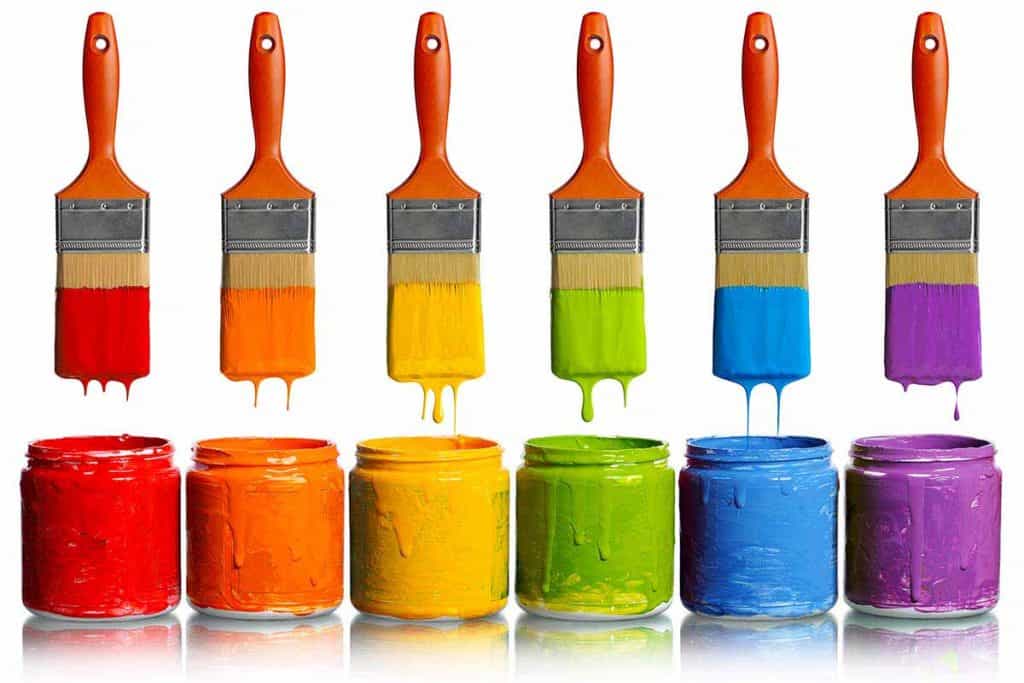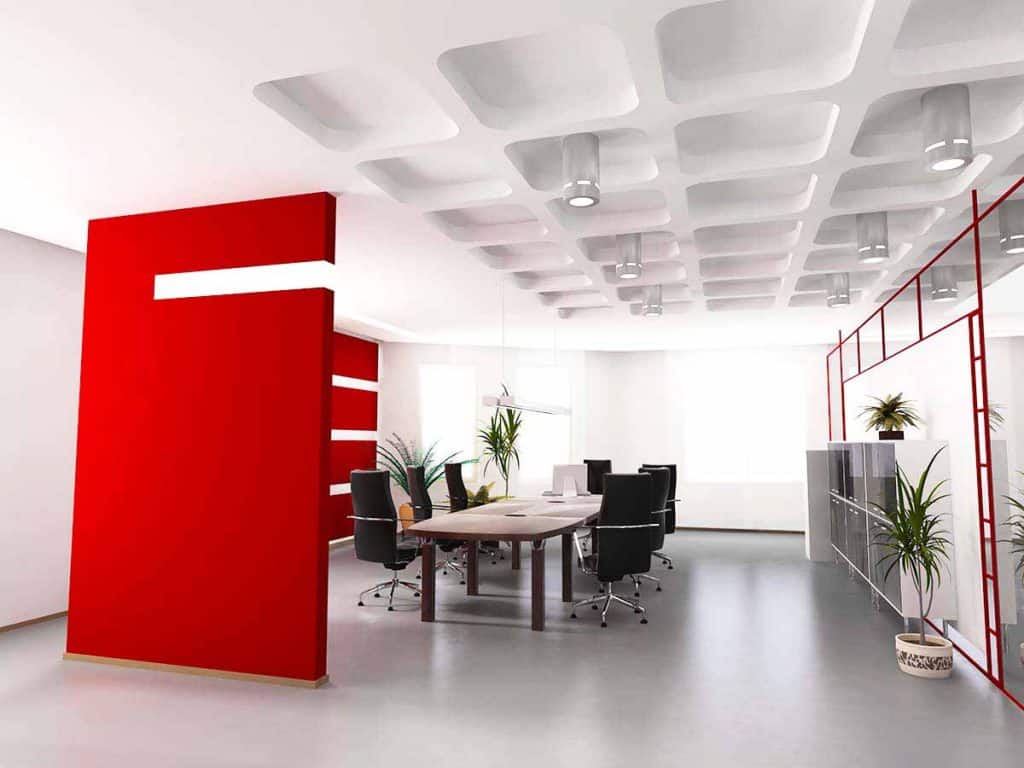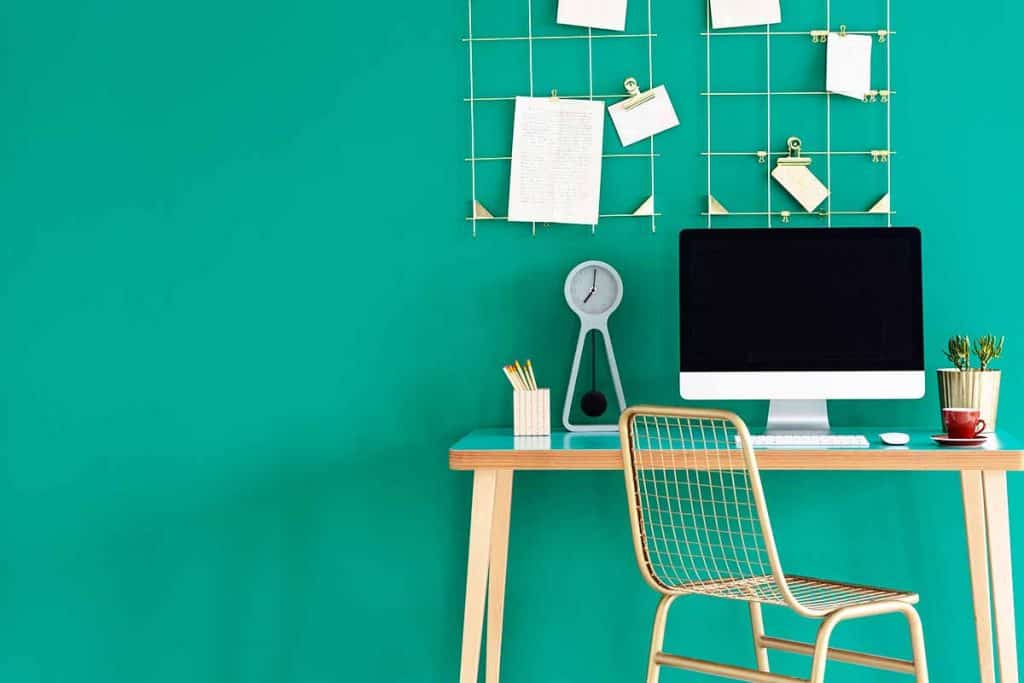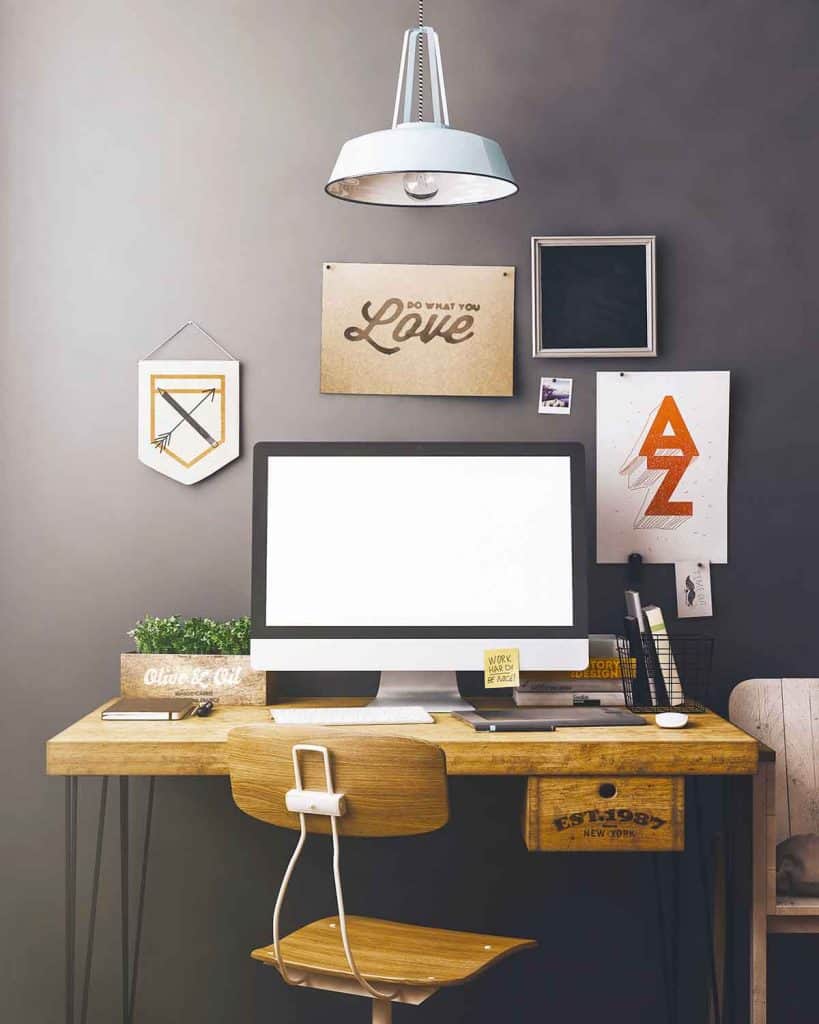10 Potent Colors for Creative & Productive Offices
Does your office color matter?
Color affects your emotions and attitudes. You can be green with envy, red with anger, pink with happiness, or suffering from the blues.
Color is more than a visual marker but an emotional one.
The right office color boosts your productivity and enhances your creativity. The wrong color for your office and your day is a struggle to get started, and you plod listlessly through to going home.
An intense red can leave your staff feeling under pressure and failing; a bright white can leave them feeling like bugs under a microscope, so what is the best color for your office?

Top 10 Best Colors for Office Color Psychology
Color psychology for offices gives the following top ten colors:
- Cream or a soft off-white is easy on the eye and gives a fresh light feel to any office, and is a neutral base for artwork and other features.
- Light blue-grey is excellent for productivity in service industries.
- Warm grey promotes a neutral mood in the office with few distractions, and this supports creative thinking.
- Silver grey is brighter and neutral for smart, professional thinkers to work hard and power through their to-do lists.
- Pale sky-blue evokes a hopeful feeling, which increases positive creativity. Optimistic people are more creative and work harder.
- Warm beige to a darker nut brown gives hints of powerful energy that helps in the office of someone who is in control and makes decisions throughout the day.
- Mimosa yellow is the color of creativity and spring mornings when you go to work with a happy bounce in your step.
- Lavender – a pale purple is the therapist’s color of choice. If you spend time interviewing people in stressful situations, lavender is an excellent choice for your office walls.
- Natural pale greens – relaxing but neutral greens allow people to breathe deep and finish their work calmly. A relaxed office environment promotes productivity.
- Tangerine orange – use with care as an energy-boosting accent or a color for the lower half of your office walls to raise energy levels in the late afternoon. Too much and your staff will pack up and leave early.
Psychology of Office Paint Colors
Color affects human moods and behavior – a ground-breaking study in 1984 by Angela Wright forms the heart of any discussion about color psychology.
Most people instinctively agree with these findings.

Blue is for Mind
If you want to increase productivity, choose paint with a blue hue to stimulate your mind. If you are an accountant, the best colors for your home office include blue tones.
Blue walls encourage you to keep going with repetitive mental tasks.

Red is for Urgency
Red makes you feel that something needs doing quickly – fire engines and sales signs all use red because you need to act now.
What do you do in your office?
If you spend your day thinking of creative designs or solving other people’s problems, red walls are going to leave you stressed and anxious – not the right frame of mind.
If your office deals with emergency calls and rapidly changing situations, red may help keep you alert and work quickly.
Red has limited usefulness for offices because it provides a short burst of energy rather than prolonged attention. But a splash of red can boost awareness.

Yellow is for Happiness
Shades of yellow make people feel happy, sunny, and cheerful.
Yellow is an excellent choice for an office where you need people to be productive, happy, and creative. It is essential to choose a pure shade of yellow to reap the best results.

Green is for Tranquility
Green is soothing, calming, and promotes feelings of relaxation.
It is the color chosen by hospitals and any other environment seeking to relax and calm the room.
Mixing Colors
You create other colors by mixing and adding white or black – obtaining light and dark tones and colors like purple and orange. These mixtures share the attributes of the single colors.
Orange, for example, takes the urgent energy of red and lightens it with yellow happiness.

Color and Feng Shui
Feng Shui uses color as a visual element to balance your life and promote health and happiness. Brighter colors are more yang, and paler shades promote yin energy.
These five elements have color associations:
- Fire – pink, orange, and red.
- Earth – yellows and browns.
- Metal – silver, grey, and bright white.
- Water – all the blues deepening to black.
- Wood – green and alive.
What do colors mean in feng shui?
Color may have a limited effect on feng shui, but it does reinforce the energy that exists in an office:
- Red is high energy and excitement, but it can be exhausting.
- Yellow is happiness and sunshine.
- Blue is peaceful and still.
- Green is growth and renewal.
- Orange is warm, talkative, and productive.
- White is bright and new.
- Purple is for meditation and healing.
The best color for office Feng Shui is not one color but a selection of them to create zones in your office for different activities.
An orange corner for talking and brainstorming, a yellow space for creativity, and a blue for sections where people need to work hard and deliver – all use the Feng Shui approach.
Feng Shui is about balancing the entire room, but if in doubt, opt for soft off-white to act as a neutral backdrop for your other feng shui elements and use color as accents.
Best Colors for Home Office
The best colors for home office need to meet your needs for a workspace and a living space unless you have enough room to dedicate an entire room as your home office.
Although the color psychology remains the same, your different needs for a dual-purpose space may drive another color choice.
Your home office is part of your home. If you hate yellow (and many people do), then the psychological boost to your creativity is lost because of your dislike. You will resent the color being in your home.
Your home office is the best place to practice zoning. If you work in the corner of a spare bedroom – paint that corner in your best office color for productivity and creativity – the rest of the room can match or have brighter tones.
Innovative storage solutions can let you pack away your home office and convert it into an ideal guest bedroom.
Feng shui colors for home office are the same, but you need to consider your approach to placing your home office in the body of your home for maximum success, productivity, and creativity.
While a spare bedroom seems the ideal place for a home office, you need to get your office space as far away from your bedroom as possible for excellent Feng Shui.
Consider repurposing part of a living room and creating a separate zoned area with screening – light and bright is best for your creativity, but match your color choices to your quadrant to avoid conflicting with your home’s natural energy flow.

Best Home Office Paint Colors
Best home office color schemes that match your home décor include:
- Light blue shades – restful on the eyes, increase productivity, and fit with Scandi design.
- Black and white with hints of red – works in a home office for a Zen-inspired working space with an edgy modern feel.
- Warm neutrals with peachy tones – suit classical interiors and country cottages with a feminine feel.
- Moody greys for modern home and décor.
- Toffee browns and golds for a rustic style.
- Deep jewel tones for a chic interior – try a pop of burnt orange for a boost to your creativity.
- Fresh greens for a light and modern interior.
Matching your home office to your home style gives you an integrated working space in your home that does not stand out as a different or unwelcome intrusion.
It is All in the Tone, Intensity, and Texture
The defining feature of the best office colors for productivity is not the color so much as the tone – pink can be a pale blush rose or a screaming hot pink. One inspires calm, and the other wakes you up, but they are both still pink.
A pastel shade of any color is calming and boosts tranquility, productivity, and the calm, creative mind.
Pastel shades are clean, fresh and improve light levels in any room – any color in a pastel shade works for a home office or a commercial one.
Pastel shades are inoffensive and suit most people, most of the time. Pastels are low saturation colors.
High saturation colors or bright colors give you more of a power boost but can be overwhelming in large doses. Imagine walking into an orange room – it is too much stimulation and has an adverse effect, but orange is a color that promotes creativity.
High impact colors like strong spice need careful use in moderation. Use deep intense colors to provide highlights and pops of colors against a neutral background – you get the best of both worlds with this approach.
The texture of your painted office walls also influences the impact of your color choice – reflective, shiny surfaces increase light and energy levels.
Matt surfaces bring a quieter effect, which may be precisely what you are looking for in a high-energy, but exhausting office environment.

Top Colors for Productivity
If you want to stimulate your mind and energize your day for optimum productivity, then pick one of these:
- Light blue partnered with white – a whole office in blue is overwhelming, but blue panels promote tidy offices and loyal staff.
- Pops of red in a grey office – the red gives a sense of urgency and mental alertness but avoids being overwhelming by the stabilizing influence of grey.
- Bright yellow in learning zones – a yellow background to whiteboards improves the transfer and retention of information.
- Splashes of orange with a cool grey background – too much orange, and everyone will be busy chatting and not working. A splash of orange and you get the energy of red with the sunshine happiness of yellow.
- Living green reduces fatigue and boosts creativity. Rather than painting your office walls in living green, get in some plants to provide that green boost. Plus, plants improve air quality.
Top Colors for Creativity
If you want your team to keep the creative ideas rolling, try the following color tricks:
- Pops of yellow – small splashes and zones to enthuse the brain, not so much that you swamp your office.
- Accent of red – red is a powerful color, and a little goes a long way.
- Orange zones – promote social interaction and brainstorming.
Office Colors – Do They Matter?
You spend a lot of time at work, and color is a universal language of emotion.
The colors in your home office, commercial office, and professional office will influence your behavior, and most people instinctively know the colors that match their working style.
A neutral office color in soft cream lets individual office workers create their own color zones – a splash of fuchsia pink on a mouse mat or an inspiring poster of a sunset in vivid orange tones.
But if you want to do one thing to set the office tone, the color you paint your walls will influence your productivity and creativity.
You get the same color impact whether you choose to follow color psychology or Feng Shui’s guidance because both approaches know that color reaches us on a deep unconscious level.
Both methods present you with the same color choices for productivity and creativity because the language of color is part of our human mind. It crosses all language barriers to speak to your mind.
